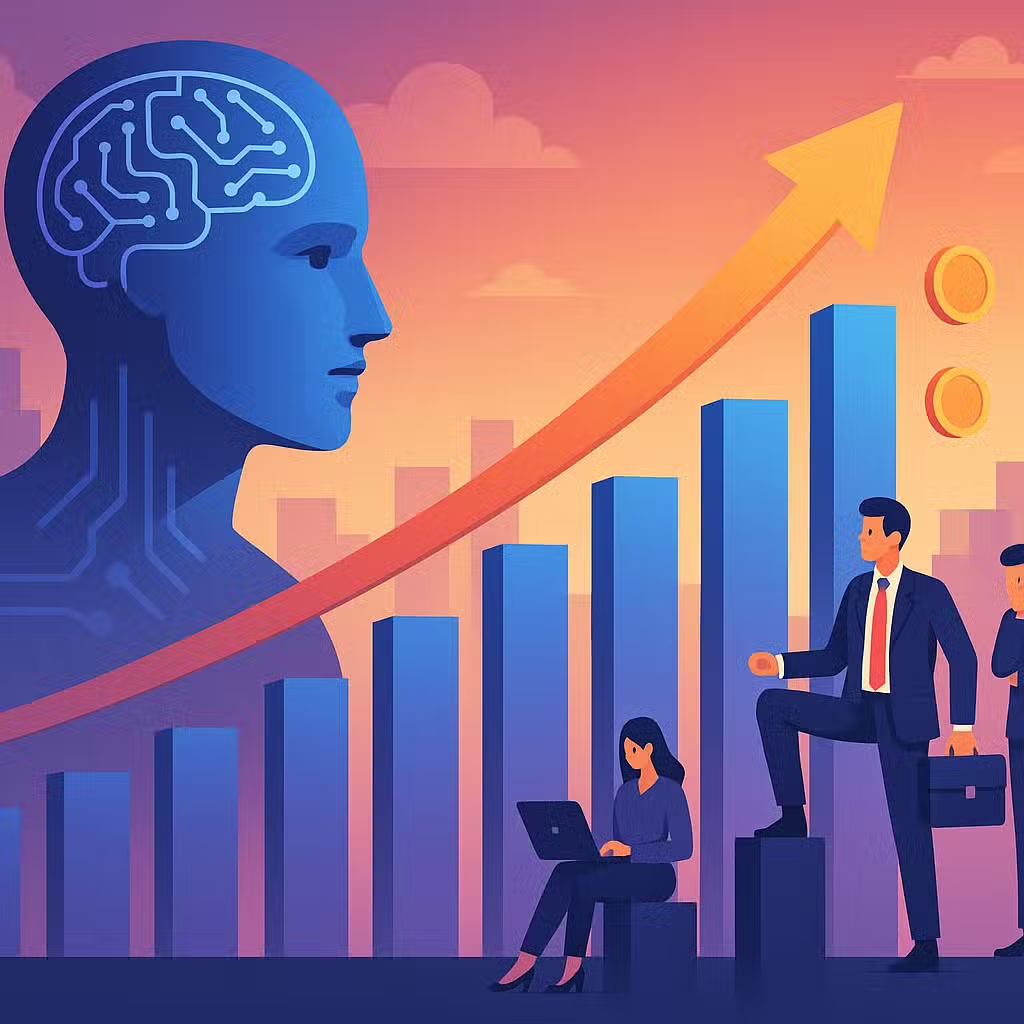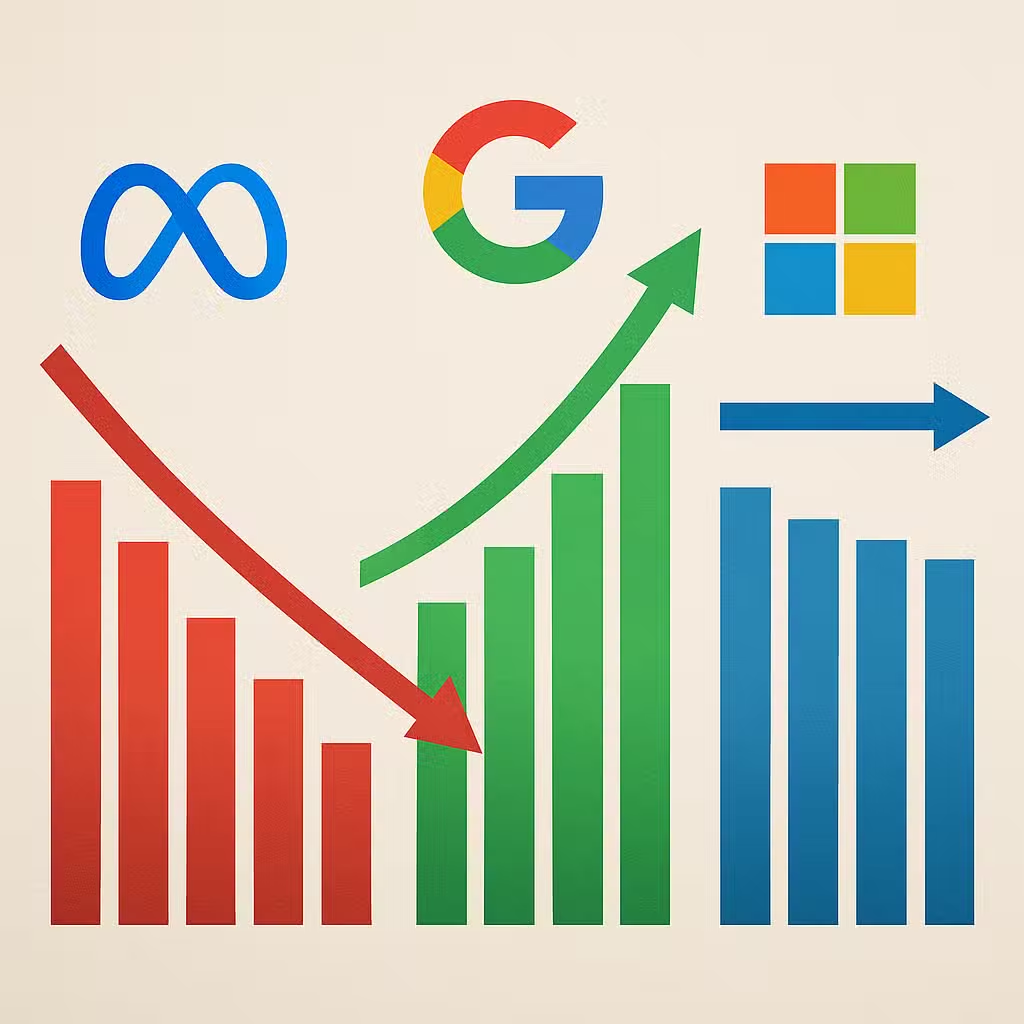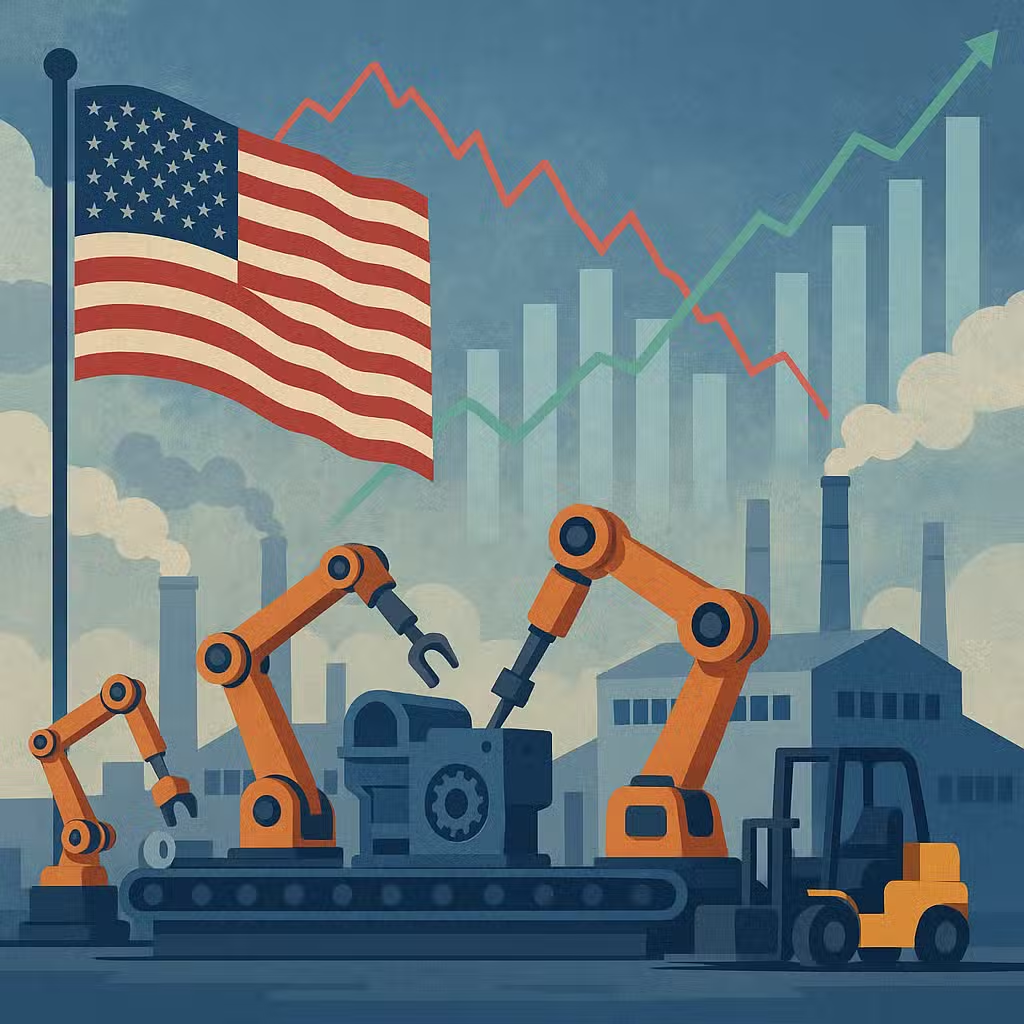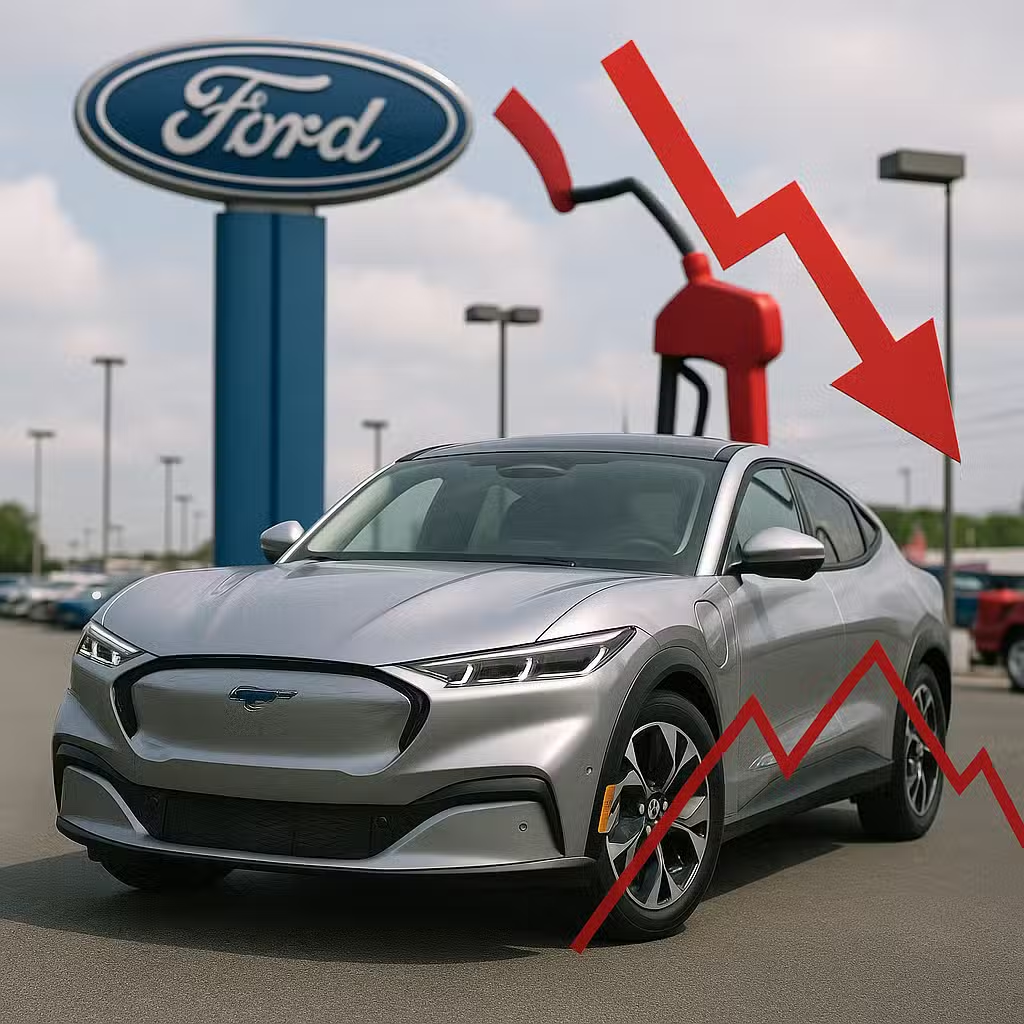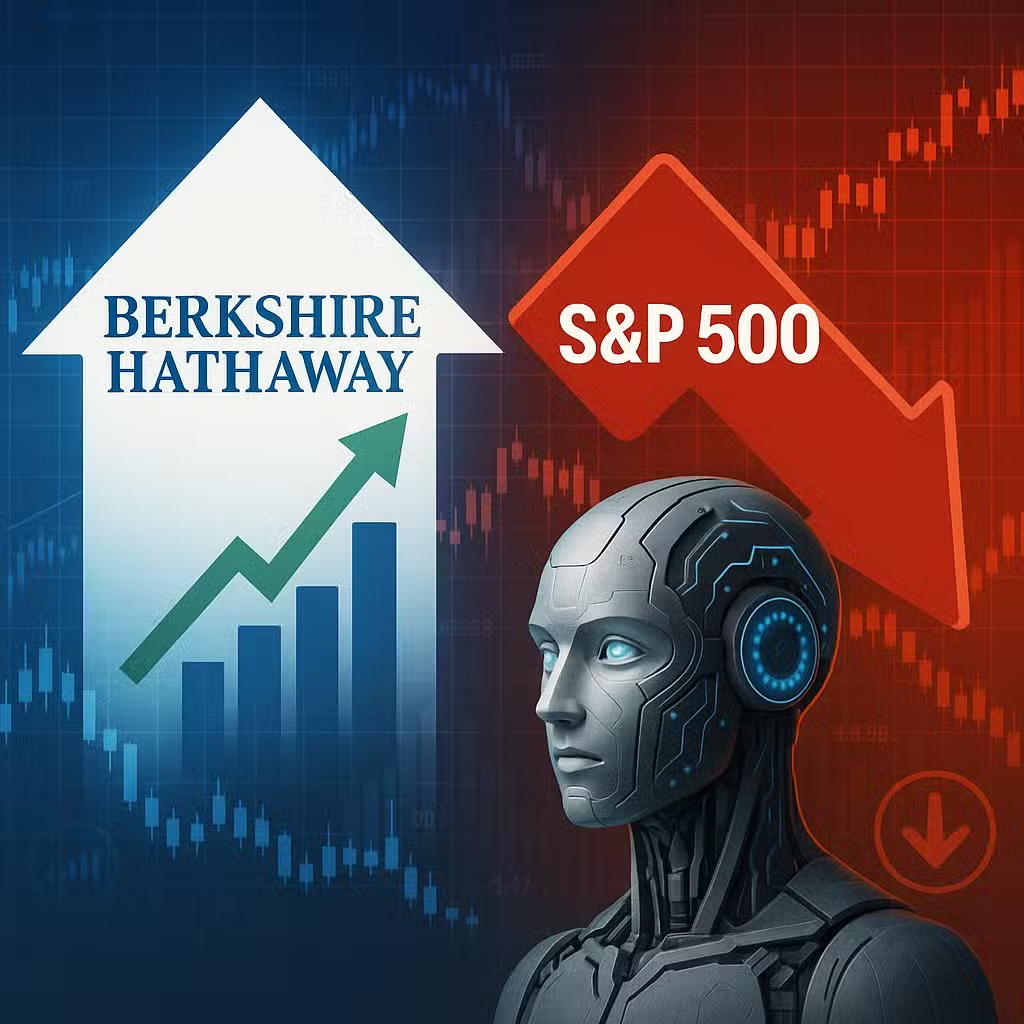AI Boosts Productivity at Large Firms, Creating New Opportunities and Risks for Investors
Imagine a race where some runners have jetpacks and others just have sneakers. That’s what the business world looks like right now as big companies use artificial intelligence (AI) to speed ahead, while smaller ones struggle to keep up. This gap matters for investors because it’s changing which companies—and stocks—are winning or losing.
Why AI Is Changing the Game for Investors
AI is helping big companies like Amazon, Microsoft, and Walmart become more productive by using robots and smart software. They can do more with fewer people, cut costs, and deliver things faster. For investors, this means these companies might earn bigger profits and see their stock prices go up.
Since the launch of ChatGPT in 2022, the productivity of big companies in the S&P 500 has jumped 5.5%. In comparison, smaller companies in the Russell 2000 have seen productivity drop by 12.3%, according to Wells Fargo. That’s a huge difference that’s shaping the stock market.
- The S&P 500 index is up 74% since ChatGPT’s debut.
- The Russell 2000 index is up only 39% in the same period.
This gap shows how much AI is helping the biggest players pull ahead, leaving smaller companies behind.
Bull Case: Why AI Helps Big Companies
- Cost Savings: Amazon is on track to replace over 500,000 jobs with robots, saving about $0.30 per item packed and delivered. Morgan Stanley estimates this could add up to $2–4 billion in savings by 2027 (NYT).
- Faster Growth: AI tools let companies serve more customers without hiring as many new workers.
- Better Margins: Companies like Walmart, McDonald’s, and Oracle are using AI to improve their profits, according to CNBC.
- Market Leadership: Firms that use AI well can outpace their rivals and grab more market share.
Bear Case: Why Some Companies Struggle with AI
- Layoffs and Uncertainty: Big names like Target, Starbucks, Meta, and UPS have cut jobs, partly because of AI. The World Economic Forum found that 40% of companies expect to shrink their workforces in the next five years as AI automates more tasks (WEF).
- Small Companies Left Behind: Smaller businesses often can’t afford the latest AI tech or the experts to run it. Their productivity is falling, making it harder for them to compete and grow.
- Inequality in the Market: As big firms get more efficient, smaller ones might lose out, which could hurt parts of the economy and make the stock market more top-heavy.
- Job Market Worries: As AI replaces more roles, there’s concern about where new jobs will come from, even if some companies invest in new types of work.
What About Small Businesses?
It’s not all doom and gloom for the little guys. An Intuit QuickBooks survey found that 68% of small businesses have started using AI, and two-thirds say it’s made them more productive. But they still face challenges getting the same big gains as larger companies.
Historical Perspective: Tech Shifts and Market Winners
This isn’t the first time technology has shaken up the business world. When computers and the internet first arrived, big companies with more money and resources got ahead, too. Over time, some small businesses caught up by finding clever ways to use new tools. But it took a while, and there were winners and losers along the way. According to a Harvard Business Review study, companies that adopt new technology early often outperform those that wait.
Investor Takeaway
- Favor Big Tech and Leaders: Consider investing in companies that are using AI well, as they’re likely to grow profits and lead the market.
- Watch Small Caps: Be cautious with small-cap stocks that may struggle to keep up with AI-driven changes.
- Look for AI Winners in Every Sector: Some smaller companies or industries may still find creative ways to benefit from AI—keep an eye out for these opportunities.
- Monitor Layoffs and Labor Trends: Watch how companies handle workforce changes. Firms that use AI to grow, not just cut jobs, may be more stable investments.
- Diversify: Spread your bets across different sectors and company sizes to manage risk as AI continues to shake up the market.
For the full original report, see CNBC

